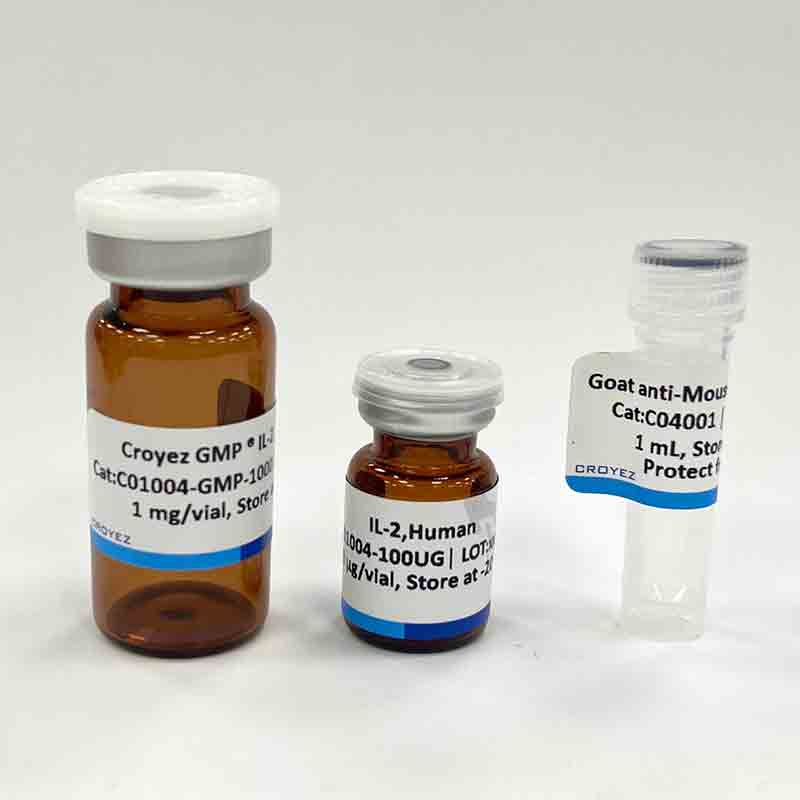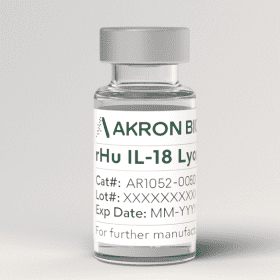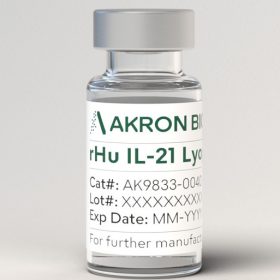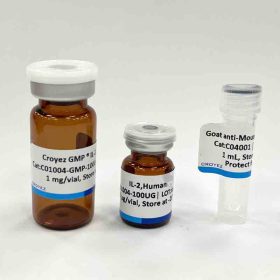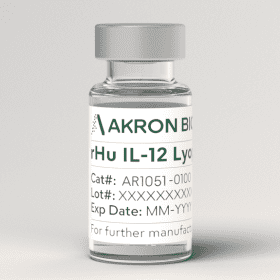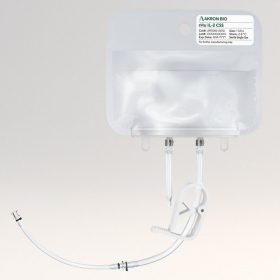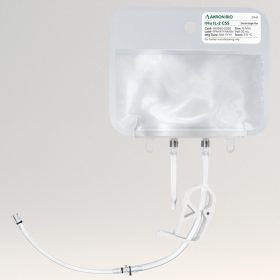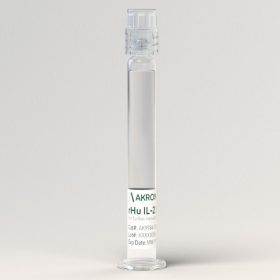Fms-related tyrosine kinase-3 ligand (Flt-3 Ligand) is a protein which in humans is encoded by the FLT3LG gene. Flt-3 ligand has a tyrosine-protein kinase activity & a growth factor that stimulate the proliferation of hematopoietic progenitor cells of both lymphoid and myeloid origin. Flt3-Ligand synergizes with other CSFs and interleukins to induce growth and differentiation.
Sequence:
MTQDCSFQHSPISSDFAVKIRELSDYLLQDYPVTVASNLQDEELCGGLWRLVLAQRWMERLKTVAGSKMQGLLERVNTEIHFVTKCAFQPP
PSCLRFVQTNISRLLQETSEQLVALKPWITRQNFSRCLELQCQPDSSTLPPPWSPRPLEATAPTA with polyhistidine tag at the C-terminus
Source:
Escherichia coli
Animal-free reagent and laboratory
Manufactured and tested under GMP guideline
Endotoxin level:
<0.1 EU per 1 μg of the protein by the LAL method.
Activity:
Measure by its ability to induce proliferation in BaF3 cells transfected with mouse Flt-3. The ED50 for this effect is <0.8 ng/mL.
The specific activity of recombinant human Flt-3 Ligand is > 1.5 x 106 IU/mg.
Purity:
>95% as determined by SDS-PAGE. Purified by Ni-NTA chromatography.
Formulation:
The protein was lyophilized from a solution containing 1X PBS, pH 8.0.
Reconstitution:
It is recommended to reconstitute the lyophilized protein in sterile H2O to a concentration not less than 100 μg/mL and incubate the stock solution for at least 20 min to ensure sufficient re-dissolved.
Storage:
Lyophilized protein should be stored at -20°C. This product is stable for one year upon receipt, when handled and stored as instructed. Upon reconstitution, protein aliquots should be stored at -20°C or -80°C. Avoid repeated freeze/thaw cycles.
Note:
Please use within one month after protein reconstitution.
Specification:
Croyez GMP® recombinant proteins are manufactured in ISO 13485:2016 and GMP-certified facility.
The processes include:
● Testing and traceability of raw material
● Records of the maintenance and equipment calibration
● Personnel training records
● Batch-to-batch consistency
● Documentation of QA control and process changes
● Manufactured and tested under an ISO 13485:2016 certified quality management system
● Stability monitor of product shelf-life
Reference:
1. Dong J. et al. (2002) Cancer Biol Ther. 1,5: 486-9.
2. Stirewalt DL, Radich JP. (2003) Nat Rev Cancer. 3,9: 650‐65.
3. Tsapogas P. et al. (2017) Int J Mol Sci. 18,6:1115.

